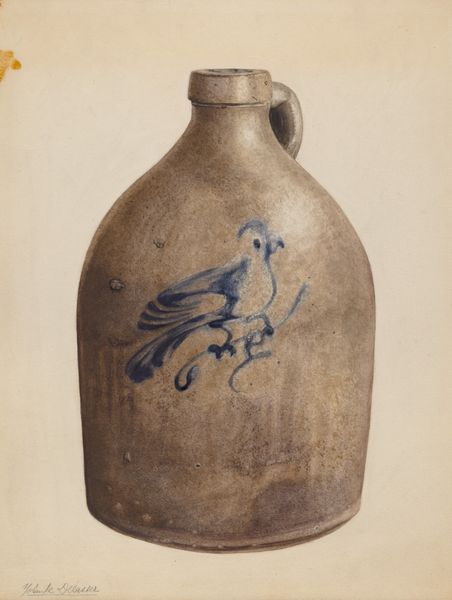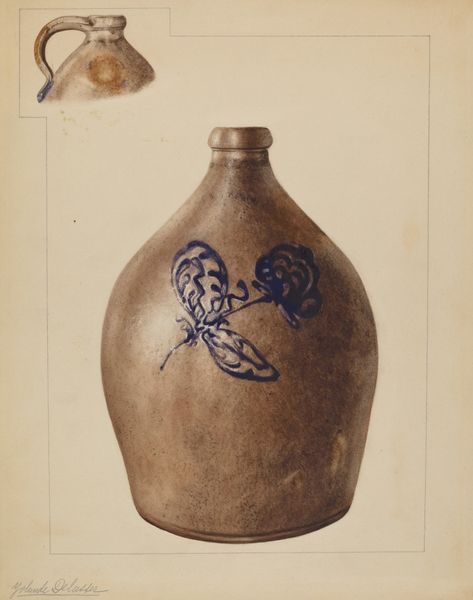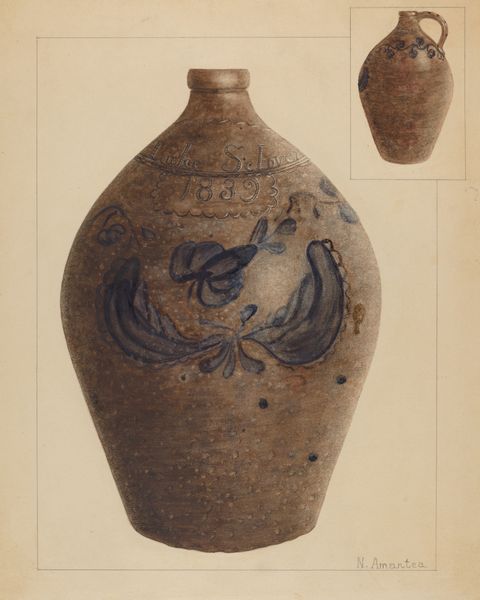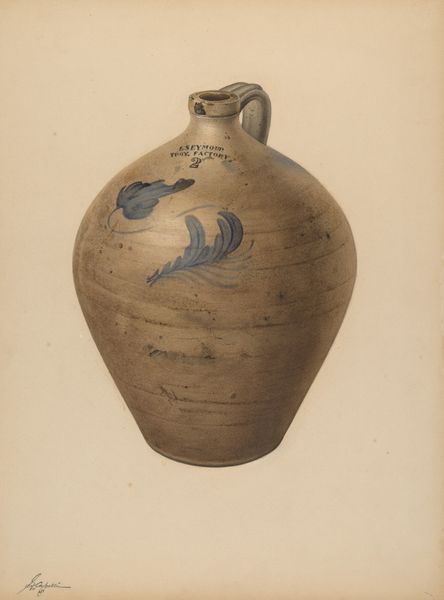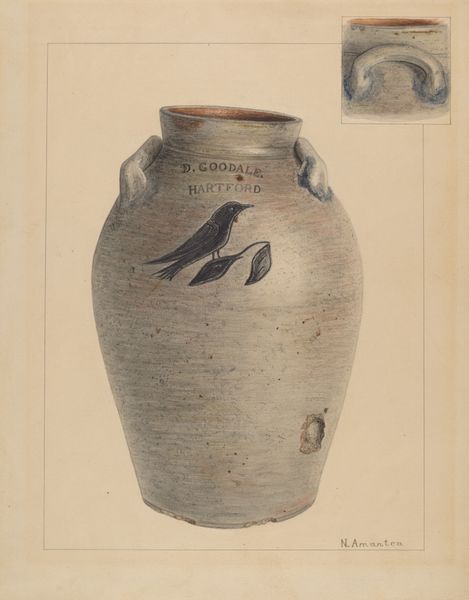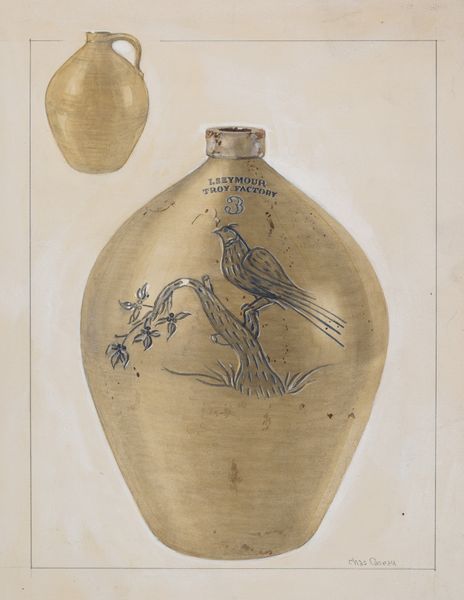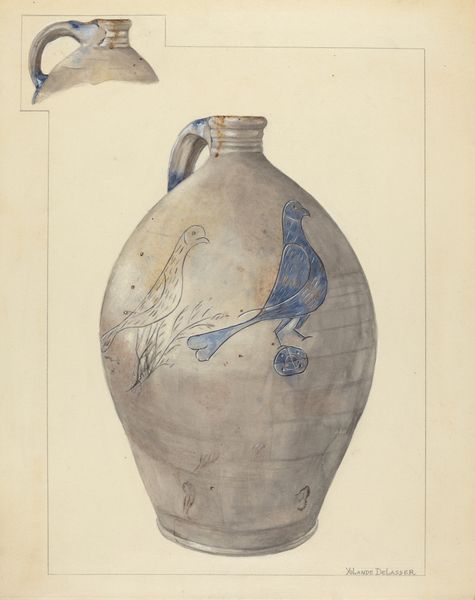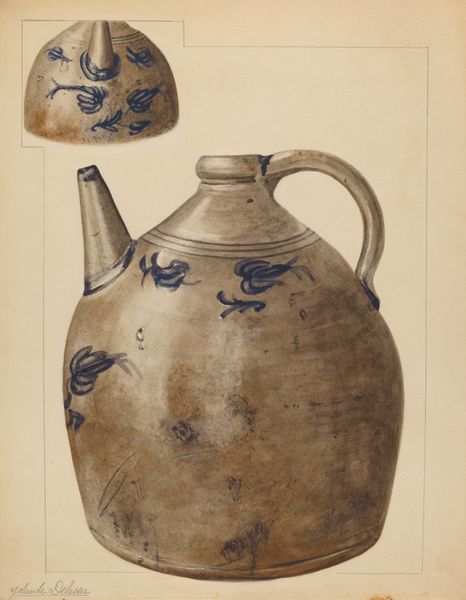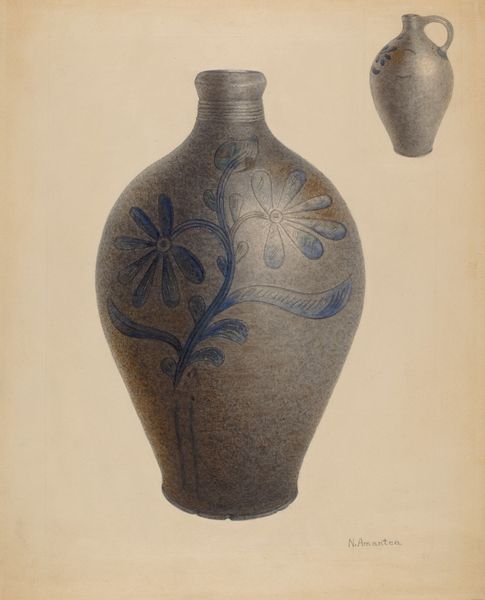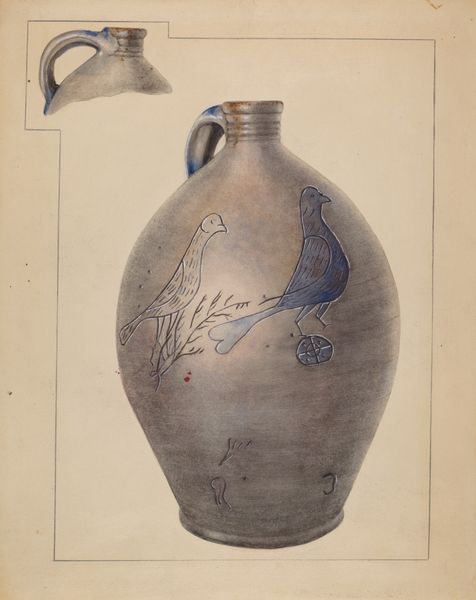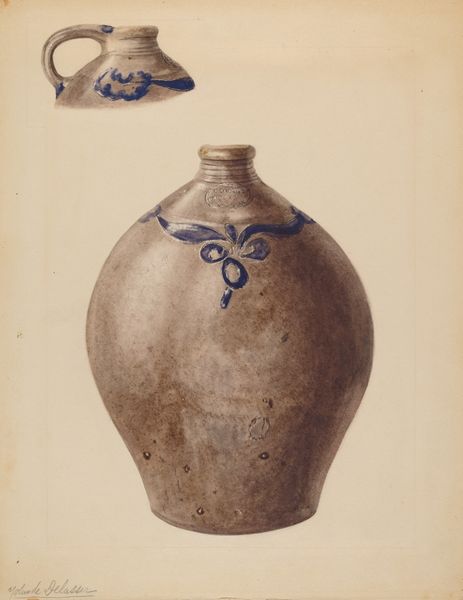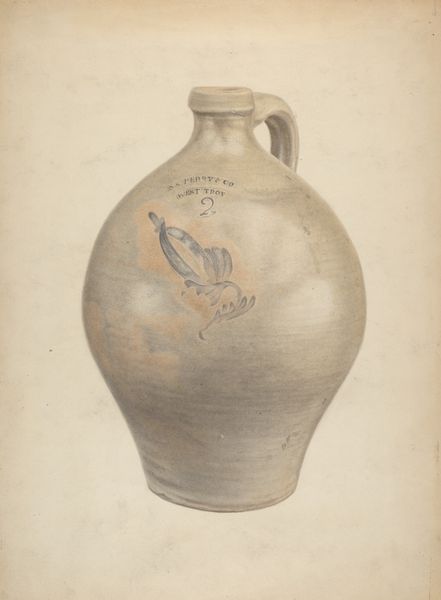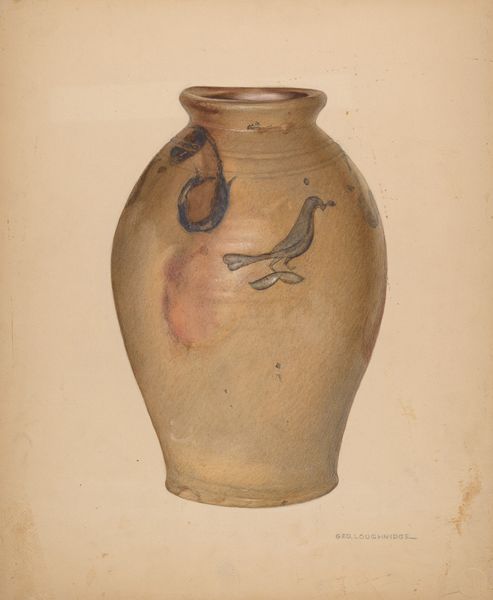
drawing, ceramic, watercolor
#
drawing
#
ceramic
#
watercolor
#
folk-art
#
ceramic
Dimensions: overall: 28.8 x 22.8 cm (11 5/16 x 9 in.) Original IAD Object: 16" High 6 7/8" Dia.(base)
Copyright: National Gallery of Art: CC0 1.0
Curator: This watercolor and drawing by Nicholas Amantea, aptly named "Jug", dates from around 1936 and depicts a rather unassuming ceramic jug. What's your initial reaction? Editor: Immediately, a kind of rustic charm. It feels…homely, like something you'd find in a grandma's kitchen. There's an undeniable comfort in its simplicity and somewhat muted palette. What’s interesting is its plainness, contrasted with the rather fanciful illustration of the bird on its body, and the secondary view included within the composition. It is almost proto-meta! Curator: That's a lovely way to put it. Looking closer, I find the execution truly intriguing. Consider the balance; the somewhat muted background highlights the vibrant blue of the bird—is it a bluebird perched jauntily on a branch? Notice how that vivid cobalt accent draws your eye right into the piece. Editor: Yes, it is this dynamic contrast that gives the work a certain edge. The speckled texture of the jug's glaze—which must be captured in the watercolor—against the smoothness of the paper, and that bright pop of colour, all adds to that rustic aesthetic you mentioned. Curator: Do you think it leans into folk-art tradition, echoing the painted ceramics common to many cultures, where everyday objects became canvases for artistic expression? I imagine these were utilitarian things but so visually expressive. Editor: Undoubtedly, it evokes a certain vernacular. There is both familiarity, through form, yet otherness by existing removed from its function. The illustration captures an idea of usefulness—that the image could replace what one would put inside it. That is the real triumph of Amantea’s picture. It transforms something ordinary into something beautiful and worthy of contemplation. It invites a conversation between tradition and pure aesthetics. Curator: I concur entirely. Thank you. It certainly lends itself well to appreciation! Editor: Indeed, a quaintly resonant piece, a worthy addition for us to consider here.
Comments
No comments
Be the first to comment and join the conversation on the ultimate creative platform.

